Taiwan-based Upholstery Fabric Makers Upgrade to Survive
2008/10/08 | By Judy LiTaiwan's upholstery and interior decorations industry has been steadily dwindling as producers follow furniture manufacturers west to mainland China. However the industry's numeric decline has also been accompanied by a qualitative shift in production mode. To stay competitive, the few remaining domestic companies in this line have been aggressively upgrading operations and today are turning out high-end products with equally high margins.
A good example of this new breed is Fuchi Interior Co., Ltd. Since its establishment in 1963, Fuchi witnessed the ups and downs of Taiwan's furniture industry and weathered many difficult periods. Today it is one of the leading upholstery manufacturers in both Taiwan and China.
Originally a producer of garments, Fuchi first entered the upholstery and interior decorations segment in 1973. Its upholstery fabrics are used mainly as covers for chairs, sofas, couches and seats for airplanes, trains, and automobiles.
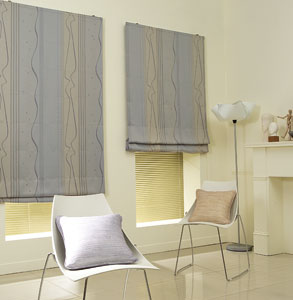
In the 1970s and 80s Fuchi grew rapidly along with the thriving furniture industry in Taiwan. It established a separate upholstery department in 1982 to handle the growing market demand. In 1989, the company debuted its "Aster" brand of upholstery fabrics and in 2000 it added the "Abb & Ab" brand to its growing line.
To improve the quality of its products, Fuchi introduced advanced textile manufacturing technology from Kawashima Textiles of Japan and imported sophisticated machinery as well. With help from Kawashima, the company has rolled out a steady stream of innovative high-end fabrics that have gained popularity among furniture manufacturers and interior designers.
"After more than four decades, Fuchi remains a formidable player in this industry," notes Jiin Tsai, vice general manager of the company. "The trick to survival in this business is to keep turning out innovative products and stay ahead of copycats, because they are everywhere, particularly in under-developed and developing countries."
Taiwan's furniture industry began shrinking in the late 1980s as cost-sensitive manufacturers left the island for mainland China. Furniture makers have been at the forefront of this trend, and their departure has forced upholstery manufacturers to follow suit.
Fuchi forayed into the mainland in 1992 with the opening of its first plant in Qingdao, Shandong Province. It opened its second manufacturing base foothold in Changchun, Jilin Province in 1995. In 2002, the company leveled up again with the opening of a leather cutting plant in Shanghai.
"We sell upholstery products mainly to domestic furniture makers. Since most of them have moved across the Taiwan Strait, we have to follow their footsteps," Tsai says. "The lower manufacturing cost in China was another incentive to move the bulk of our production to China. Today, our operations in Taiwan largely focus on marketing, R&D, and some high-end production lines."
Fuchi has around 200 employees in Taiwan, with more than one tenth of them working in R&D. In China, by comparison, its employee count is multiples higher. "Our market focus for years was Taiwan market and later mainland China," Tsai says. "We began exploring other markets in the late 1990s and established a company in Malaysia in 1998. In 2005, we opened a plant in Thailand to turn out fabrics and leathers for vehicle seat covers."
"The market trend for upholstery products changes very fast," Tsai adds. "Usually the life cycle of an upholstery pattern is only one or two years. So, manufacturers in this industry have to be sensitive and efficient enough to meet changing fashion trends," Tsai notes. "Our strong R&D team and highly efficient plants enable us to adapt quickly to the market trends."
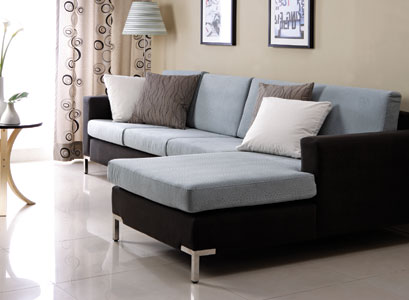
Keeping Pace With the Market
Today Fuchi offers more than 900 patterns of upholstery fabrics. Among its more popular lines are jacquard, sheer, blinder, and velvet fabrics. "In addition to the texture and quality, we also emphasize the functions of our fabrics," Tsai reports. "We have developed special fabrics that are flame retardant, dust-proof, quick-dry, and can block ultraviolet rays. We also offer classical style fabrics that appeal to middle-aged and older consumers, as well as more modern and unique patterns for the younger set."
As the world turns green, Fuchi is also ramping up production of eco-friendly fabrics that can be recycled and are environmentally benign. "It's not easy to keep up with global trends, but we do our best," says Tsai. "It used to take at least two years to develop a new kind of fabric. Today we can do it in one year."
Although it faces no shortage of competitors, Fuchi is positioned to weather the challenges and further hone its market edge. Apart from Taiwan and China, Fuchi is exploring markets in Southeast Asia and other regions of the world. "We can flexibly control our inventories to meet the needs of clients around the world. This flexibility means we can handle big-ticket orders from large furniture manufacturers or more modest orders by smaller manufacturers. We can even provide minimal volume for individual interior designers," Tsai states.
By focusing on operational efficiency and constantly incorporating advanced manufacturing technologies, Fuchi has partially insulated itself from the competitive business climate to achieve steady growth. It is a strategy the company intends to continue as it aims for a leading industry position in the years ahead.
Bucking the Trend
Yison Interior Textiles Co., Ltd. is one of the few upholstery manufacturers keeping all of its manufacturing operations in Taiwan. "Taiwan's furniture industry hit its peak in mid-1980s and from then on it has gradually declined as more and more manufacturers have moved overseas. Rattan furniture makers ignited the first wave of emigration, and were then followed by wooden furniture makers. In recent years steel and metal furniture makers have also followed suit," points out Bill Jong, Yison's general manager. "Today more than 90% of Taiwan's furniture makers have already moved out of the island, mainly to China and the countries in Southeast Asia, such as Vietnam, Thailand, Malaysia, and Indonesia."
A three-decade veteran in the upholstery industry, Jong says he has confidence in Taiwan's manufacturing environment despite its deterioration since the early 1990s. "I established Yison in 1989 and have never thought of moving it from Taiwan."
Yison initially turned out fabrics for domestic furniture makers and exported a small portion of its output. Today the company provides half of its output to the domestic market and half to overseas clients. Many of its overseas clients are Taiwanese furniture manufacturers that have moved production lines away from the island.
"To stay competitive in the market, we have been working very hard and upgrading manufacturing technologies and facilities. We have purchased advanced machinery from Japan and Germany, and in 1998 we established an automatic warehousing system," Jong says. "To survive, we have kept paring manufacturing costs by streamlining our facilities and labor force."
"Before, we focused on supplying one kind of fabric in high volume," Jong continues. "Today, we supply several different kinds of fabrics in smaller volume. This means more emphasis on developing new fabric patterns, while also delivering the best quality products at the most reasonable prices."
Yison's upholstery fabrics are used mostly for sofa and chair covers and partition surfacing. "Over the past six or seven years we have had a tough time due to soaring wages and an outflow of clients," Jong admits. "And the soaring cost of raw materials has made a bad situation worse. Last year our raw material costs jumped by 50%-60%, pretty much gutting our profits."
Yison produces around 300,000 yards of fabric a month at a price range of about US$3-25 per yard. The company claims its annual revenue has halved from its peak to NT$120-150 million (US$3.87-4.84 million).
To trim operating cost, Yison has aggressively streamlined manufacturing processes and improved management efficiency. "We used to participate in seven or eight overseas exhibitions a year to promote our products, but in recent years we have cut the number to two or three annually," Jong notes.
One area in which Yison has not spared any cost is R&D. The company is developing multifunctional fabrics with anti-bacteria qualities and nano-grade yarn. Yison started as a pioneer, Jong says, and it intends to stay at the industry forefront through constant innovation. "Taiwan has talent, technology, and experience in the upholstery industry," he says. "We should be confident and brave enough to face challenges. Our company is investing in the industry because we believe Yison can surmount the current difficulties and regain its strength in the arena," Jong says.
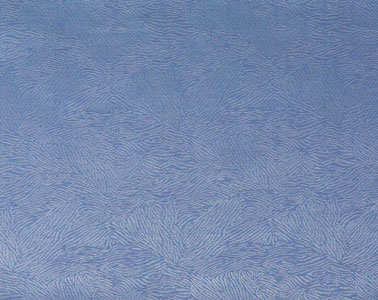
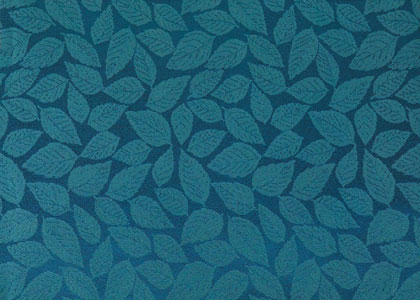
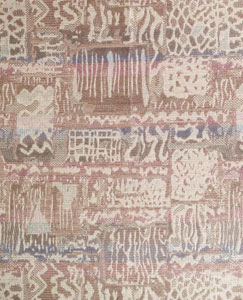
Quality First
Established over two decades ago in Tainan, southern Taiwan, Poly-Vigor Enterprises Co. is a dynamic upholstery manufacturer. "Tainan is the historical production base for textile products in Taiwan," notes a senior company official, "and manufacturers there have contributed a lot to the island's textile industry."
In its early years Poly-Vigor exported all of its products, but later on began supplying the domestic market as well. It set up an R&D department in 2001 to develop new kinds of fabrics and patterns. "We care about every step of the manufacturing process, from the selection of cloth material to cutting, sewing, patterning, packaging, and shipping."
The company now offers a wide variety of upholstery items, including curtains, drapes, pillow cases, tablecloths, and covers for chairs, sofas, and couches.
All-in-One Production
Ever Charm Foamtex Co., founded in 1993, boasts of being the first manufacturer in Taiwan to develop acrylic foam coating technology for upholstery as well as air-permeable fabrics for garments.
From the beginning, Ever Charm has used advanced equipment from the United States, Germany, Italy, and Holland. It also imports raw materials from the U.S., Australia, and Europe. Today, it has two integrated production lines that turn out a total of 1.5 million yards of upholstery cloth per month.
"Our production lines handle almost every step in the manufacturing of our products, as well as such specialized treatments as acrylic foam coating, paste coating, dipping, and flocking," comments company's president, Wu Sheng-en. "These specialized treatments make our cloth flame-retardant, water-repellent, no-slip, non-toxic, and light-blocking. Our cloth can also reduce external noise, and it has temperature-insulating properties as well."
"Our aim is to combine the technologies of the textile and chemical industries to generate high-quality, multifunctional upholstery for our clients at home and abroad. Every year we introduce more than 30 new products; we retain those that are popular in the market, and gradually phase out those that are less acceptable. Today we offer more than 300 different types and patterns of upholstery cloth for our customers to choose from."
Ever Charm's best-sellers include roller-blind fabric, vertical-blind fabric, Roman shade fabric, curtain fabric, furniture fabric, projection-screen fabric, inkjet fabric, awning fabric, and geo-textiles.
"Our products meet European and American standards, and we sell them to more than 40 countries in Europe, North America, Asia, the Middle East, Africa, and Australia," Wu reports. "In addition, we've signed contracts with more than 80 agents that have over 6,000 outlets around Taiwan."




